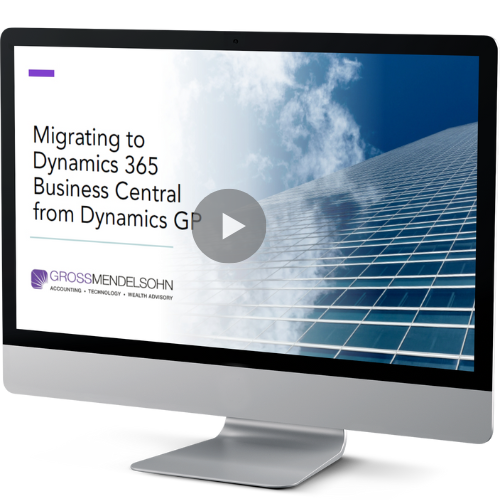‘Tis the season! But we’re not talking about holiday gifts, hot chocolate or cookies. It’s that time of year when Microsoft Dynamics GP users search for help with year-end closing procedures.
We’ve got the guidance you’re looking for, in five simple steps.
Before we jump in, you can watch our year-end closing webinar here.
Whether you are a GP rookie or a seasoned pro, you may be wondering where you should begin with your year-end procedures. Let’s get to it.
1. Inventory
The best place to start is by closing out the Inventory Control module and preparing your inventory records for the new fiscal year.
Here’s a quick breakdown of your Inventory year-end steps:
- Post all transactions for the year including SOP and POP transactions
- Reconcile inventory quantities
- Perform physical inventory and post any adjustments
- Print any reports for planning or permanent records
- Make a backup
- Close the Inventory year
You can check out a more in depth look at these steps via Microsoft Support here.
2. Receivables Management
Before moving forward, you’ll want to make sure you read your Receivables Management checklist.
Remember that the Receivables Management module date is sensitive, so you’ll want to be careful of the transaction dates when following this list:
- Separate current year and future year transactions into separate batches
- Post all Sales and RM transactions for the current fiscal year
- Make a backup
- Close the RM year
- Close all fiscal periods
- Post future (now current) year transactions
Pro tip: If you post transactions out of sequence use the Reconcile Year utility to update totals.
3. Payables Management
Now it’s time to jump into the Payables Management module. Before you begin, make sure you have a complete backup copy of your database so that you will be able to restore it if a problem occurs.
As I mentioned before, this module is also date sensitive. To ensure that the SmartList objects, the Payables Management summary reports and the Amounts Since Last Close are correct, verify transaction dates when completing the year-end close using these steps:
- Post all POP and PM transactions for the current fiscal year
- Make a backup
- Close the fiscal year
- Close all fiscal periods
- Post future (now current) transactions
Pro tip: If you post transactions out of sequence, use the Reconcile Year utility to update totals
You can read more about these steps in depth here.
4. Fixed Assets
Now it’s time to move on to Fixed Assets Management. Before you run though this checklist, make sure you have successfully closed Payables Management. This will guarantee that your outstanding fixed asset transactions are capitalized.
Once those year-end procedures are complete, you can now move on to the following tasks:
- Enter all additions, changes, transfers and retirements for the current year
- Run depreciation through the end of the fiscal year
- Perform the GL posting process
- Run any year-end reports (the year-to-date amounts for prior fiscal years are not kept in Dynamics GP)
- Verify the Fixed Assets calendar and quarters
- Make a backup
Dynamics GP Support offers a helpful breakdown of the Fixed Asset module changes, which you can dive into here.
5. Analytical Accounting
The fifth and final step before closing out the GL is to verify your Analytical Accounting records. Your year-end steps for this are simply to:
- Be sure all other modules have been closed except for GL
- Verify totals of financial reports
Note that there are multiple scripts to be run for AA depending on which version of GP you’re using. You should follow KB 960356 for all steps.
There is no separate closing procedure that must be run in Analytical Accounting but it is very important to review the KB and reports before performing the GL close if you use the AA module.
Bonus: General Ledger Year-End Steps
Once you have completed these five steps, you can move on to your General Ledger checklist. You’ll be able to complete your year-end close in General Ledger by:
- Ensuring all other modules are closed
- Posting final year-end adjusting entries
- Verifying that all accounts are setup properly (Pro tip: setup a SmartList to help with this step)
- Verifying the GL Setup options
- Making a backup
- Verifying/setting up the new fiscal year
- Closing all fiscal periods
- Making a final year-end backup
You should have a backup for pre- and post-close company databases just in case something goes wrong.
Remember, your balance sheet amounts will not roll-forward until you have completed your GL year-end close. You can still post backwards to the last closed year — so if you close 2020, you will still be able to post any post-closing adjusting entries back to 2020.
Need Help?
With the new GP product support lifecycle, you should plan on installing the year-end update even if you are not using the payroll or AP modules.
If you have questions on how to install your update or experience an error while going through your year-end closing procedures, give us a call at 410.685.5512 or connect with us online.


